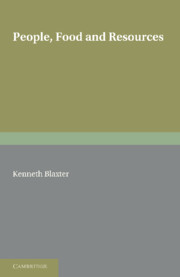Summary
During the last few decades concern has been increasingly expressed about the growth in the number of people in the world and questions have been raised about whether the resources that we can muster to increase the production of food and other essentials on which man depends are sufficient to keep pace with a burgeoning humanity. In the early 1970s the reports by the Club of Rome, in which mathematical methods of dynamic modelling were used to elucidate the relations between population growth, industrialisation, the use of natural resources and pollutional effects of man's activities, suggested that, ultimately, catastrophe was inevitable (Meadows et al., 1972; Mesarovic and Pestel, 1974). At this same time, however, there was a far more immediate concern about the food supplies of the world. In 1971, 1972 and 1973 a combination of poor harvests in each of the major grain-producing areas of the world, combined with the policy change made by the government of the United States of America to reduce its reserve stocks, led not only to increases in grain prices, but to a realisation that the world was critically dependent on each year's harvest. The increase in price had devastating effects on poorer countries which of necessity had to import grain to feed their peoples. The World Food Conference was called by the Food and Agriculture Organisation (FAO) of the United Nations in November 1974 to discuss this serious and immediate problem.
- Type
- Chapter
- Information
- People, Food and Resources , pp. 1 - 3Publisher: Cambridge University PressPrint publication year: 1986



